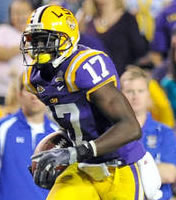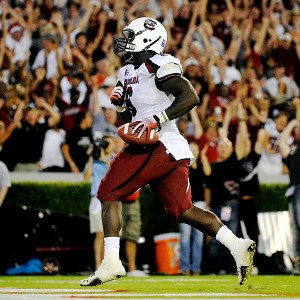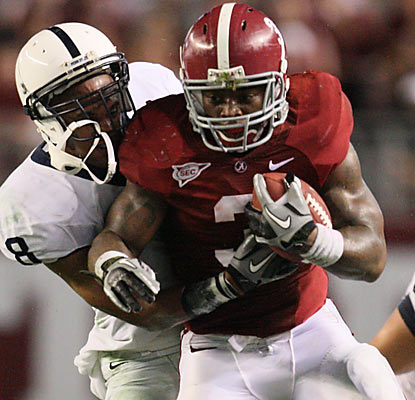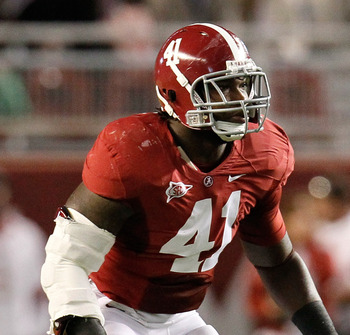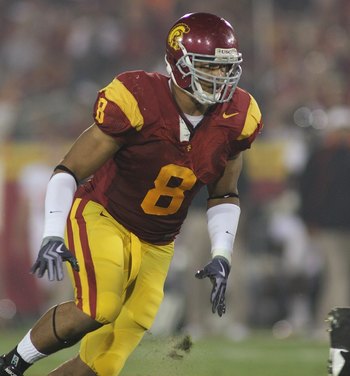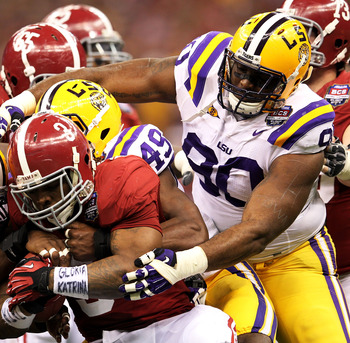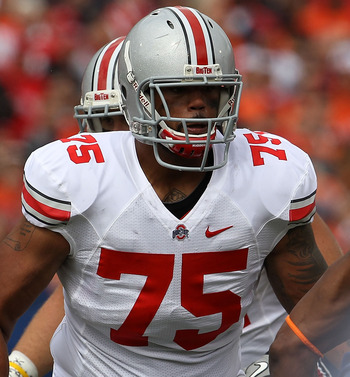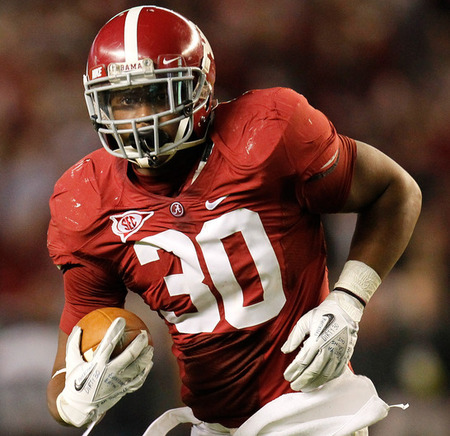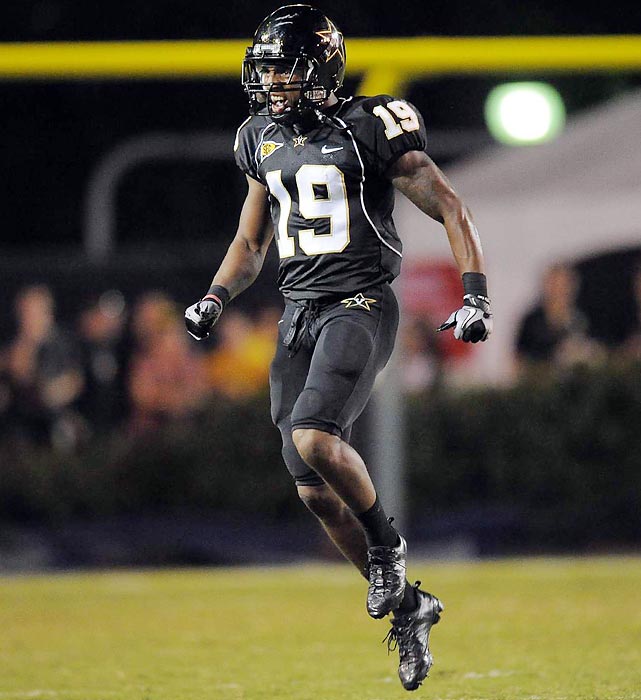A wide range of names are paired with Seattle in the various mock drafts doing the rounds, with some suggestions more realistic than others. Today I wanted to look at a handful of players that are often projected to the Seahawks that I think are unlikely to be on the team’s radar on April 26th.

Luke Kuechly (LB, Boston College)
Solid and dependable, Kuechly will offer a team leadership and no-nonsense tackling ability at the second level. The Seahawks face a possible crisis at linebacker if David Hawthorne and Leroy Hill both depart, leaving two positions that will need to be addressed during free agency or the draft. Kuechly’s performance at the combine answered questions about his athleticism and size, with many now suggesting he could be a top-15 pick.
So why not Seattle?
Kuechly isn’t a pass rusher and although he’s totalled incredible tackle numbers at Boston College, he doesn’t make enough plays in the backfield to warrant such a high pick. Seattle’s biggest issue on defense is a total reliance on Chris Clemons for pressure and they must find more pass rushers. Whether it’s another player who can rush the edge or an outside linebacker who can cause some problems, the Seahawks need to spend the #12 pick on a prospect that will help create more pressure. This front office has found production in former UDFA David Hawthorne, 4th round pick KJ Wright and 7th round pick Malcolm Smith. Simply put, middle linebacker’s aren’t worth the #12 pick unless they’re called Ray Lewis. Kuechly will be a fine, unspectacular pro at the next level and whoever drafts him probably won’t regret it. However, the Seahawks are unlikely to draft a defensive player who won’t tangibly improve the team’s pass rush in 2012.

Ryan Tannehill (QB, Texas A&M)
Considered by many to be the third best quarterback in this draft class (an opinion I disagree with) Tannehill has been touted as a possible top-10 pick. Although there’s room for serious improvement on his 2011 performance for Texas A&M, some teams love his upside and he compares favorably to Jake Locker – drafted 8th overall by Tennessee last year. Depending on how the Robert Griffin III & Peyton Manning sweepstakes play out, Tannehill could be available at #12.
So why not Seattle?
The Seahawks didn’t rate Locker that highly last year and probably would’ve passed on him even if he was available with the #25 overall pick. Although Tannehill has certain ‘point guard’ tendencies, he’s also proven to be quite erratic and his composure in the pocket leaves a lot to be desired. Despite utilising naked bootlegs and a lot of play action, the Seahawks want someone comfortable in the pocket and not a player like Locker/Tannehill who will always prefer throwing on the move. Tannehill is a bit of a boom-or-bust type on the field and will appeal more to the Mike Shanahan’s of this world than the Pete Carroll’s, even though both offenses share similarities. That in turn is another reason this probably won’t happen – does Tannehill get past the Redskins at #6? Cleveland hold the better hand in trade negotiations for Robert Griffin III with their two first round picks and will be able to out-bid Washington at any point. Peyton Manning won’t compete in his brother’s division, so what does Washington do if they don’t make a deal with St. Louis? It seems likely they’d take Tannehill at #6, removing him from contention at #12 altogether.

Michael Floyd (WR, Notre Dame)
Floyd did his best to spoil a blossoming career with a series of off-field incidents at Notre Dame and a major act of indecision over whether to declare or not for the 2012 draft. Despite beginning the year with a suspension, he actually enjoyed a productive 2011 season and got people talking about his football skills again. While a lot of receivers have struggled at the Senior Bowl or combine, Floyd has excelled including a good display in Indianapolis. He could be the second receiver drafted after Justin Blackmon.
So why not Seattle?
Pete Carroll chased two big name receivers in Brandon Marshall and Vincent Jackson, before finally signing Sidney Rice to a big contract prior to the 2011 season. The Seahawks also offered extensions to Mike Williams and Ben Obomonau, drafted Golden Tate and found a diamond in the rough with Doug Baldwin. Tight end Zach Miller was also signed to a big contract, while Anthony McCoy and Cameron Morrah have also flashed at times. You can never have too many good receivers (ask Green Bay) but the Seahawks have other priorities. Receivers generally take time to adjust to the pro-game and with an inconsistent quarterback situation, Seattle might not feel the benefit of such a high pick. Floyd would be a luxury at #12 and they just aren’t likely to go receiver in round one this year.

David DeCastro (OG, Stanford)
Consistently regarded as the top interior lineman available and rated as one of the best in recent years, David DeCastro will be a guaranteed top-25 pick next month. Andrew Luck deserves a lot of the hype he’s received in the last two years, but he’s also benefited from a superb offensive line including both DeCastro and Jonathan Martin. Possibly the best pulling-guard you’ll see on tape, DeCastro is a pure technician who excelled at right guard for the Cardinal.
So why not Seattle?
Having spent first round picks on offensive lineman in back-to-back years, the Seahawks will surely look elsewhere in 2012. The team remains high on Robert Gallery – a Tom Cable favorite – and the rest of the line is young and developing with quality depth. For years Seahawks fans clamoured for a good offensive line and know that they have one, it’s time to concentrate on other matters. Replacing Gallery is not a priority and having played right guard for much of his college career, DeCastro may be best suited to the same role in the NFL. We’re only 12 months removed from Seattle drafting John Moffitt and even if DeCastro is as good as advertised, it seems like a major stretch to think the Seahawks will draft yet another offensive lineman with their first pick next month. It’s time to address other areas of the team.

Fletcher Cox (DT, Mississippi State)
An incredible athlete with superb speed and mobility for a 298lbs lineman. Cox has done more than most prospects to boost his stock this off-season by interviewing better than expected and exploding at the combine. Although his college production and tape isn’t quite as spectacular, the combination of size and speed will interest teams looking for an interior defensive lineman or a five-technique pass rusher.
So why not Seattle?
I’m not convinced the Seahawks will draft an interior defensive lineman this year and believe they will go all-out to re-sign Red Bryant. Although Alan Branch offered very little pass rushing ability alongside Brandon Mebane in 2011, I think the team liked the impact their ‘big three’ had against the run and will look to add another edge threat to compliment Chris Clemons. Although I suspect the Seahawks would really benefit from a talented three-technique, I’m not convinced that’ll be Cox’s best position at the next level. He always seems more comfortable working the edge and has a ‘runaway train’ style to his pass rush – he’s often off balance with his head down charging at the quarterback. He doesn’t have a lot of lower body power and the Seahawks could lose a lot of their run-stopping quality by swapping Branch for Cox. On tape, there’s not a lot of evidence of him collapsing the pocket from the interior and he looked more comfortable playing end at Mississippi State. Although the size/speed combination offers some upside, technically he’s still incredibly raw.





